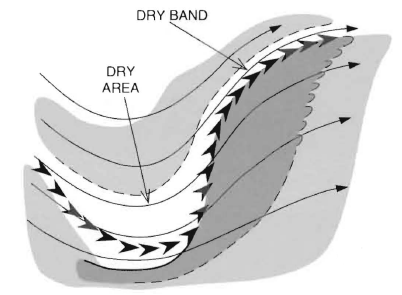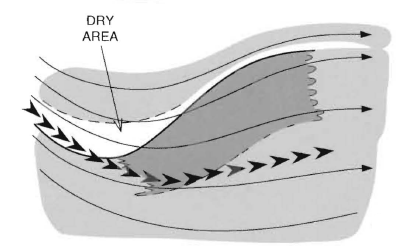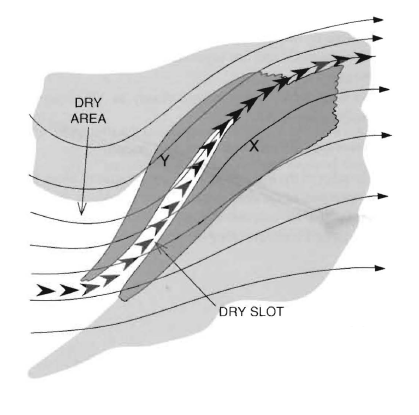Leaf variations
A baroclinic leaf's appearance can vary depending on how the upper level trough and jet streak are positioned. Two main types of leaves can be distinguished: the first type is connected to a trough and a continuous jet stream, while the second type is heavily influenced by an approaching jet.
The type that forms on the leading edge of an upper level trough is more common. They move parallel or slightly to the right of the jet (towards the warmer air mass). A schematic of this leaf type is presented in figure 2a.
Figure 2a: Baroclinic leaf on the front side of a trough (common type). The jet axis is shown by a line of arrows. Note that in these schematics dry (white) and humid (black) areas are inverted compared to the usual depiction.
At least in the early stage, the leaf has an s-shaped rear edge with a distinct concave part in WV imagery. The jet axis (black arrow line in figure 2a) lies along the convex part but not fully along the concave sector. The rear edge of the concave part is adjacent to the driest areas in WV images.
Figure 2b: Baroclinic leaf on the poleward side of a jet axis
The second leaf type can be seen in figure 2b. In this type the jet crosses the leaf so that it is left on the cold side of the jet (black arrow line in figure 2b) and lies on the poleward side of the jet axis. This baroclinic leaf also shows an s-shaped appearance with a relatively indistinct convex part in WV imagery.
Figure 2c: "Double leaf"
Notice:
| In general, baroclinic leaves developing within the main polar front are larger than those that form within secondary baroclinic zones in the cold air. |


